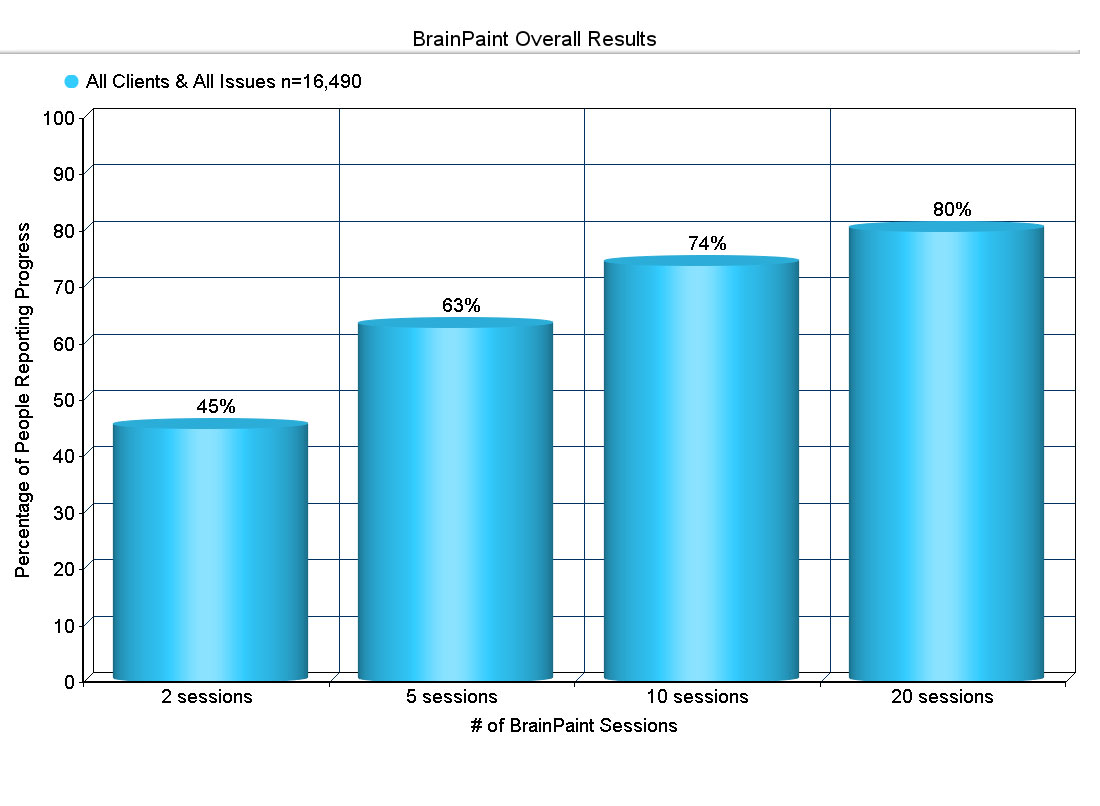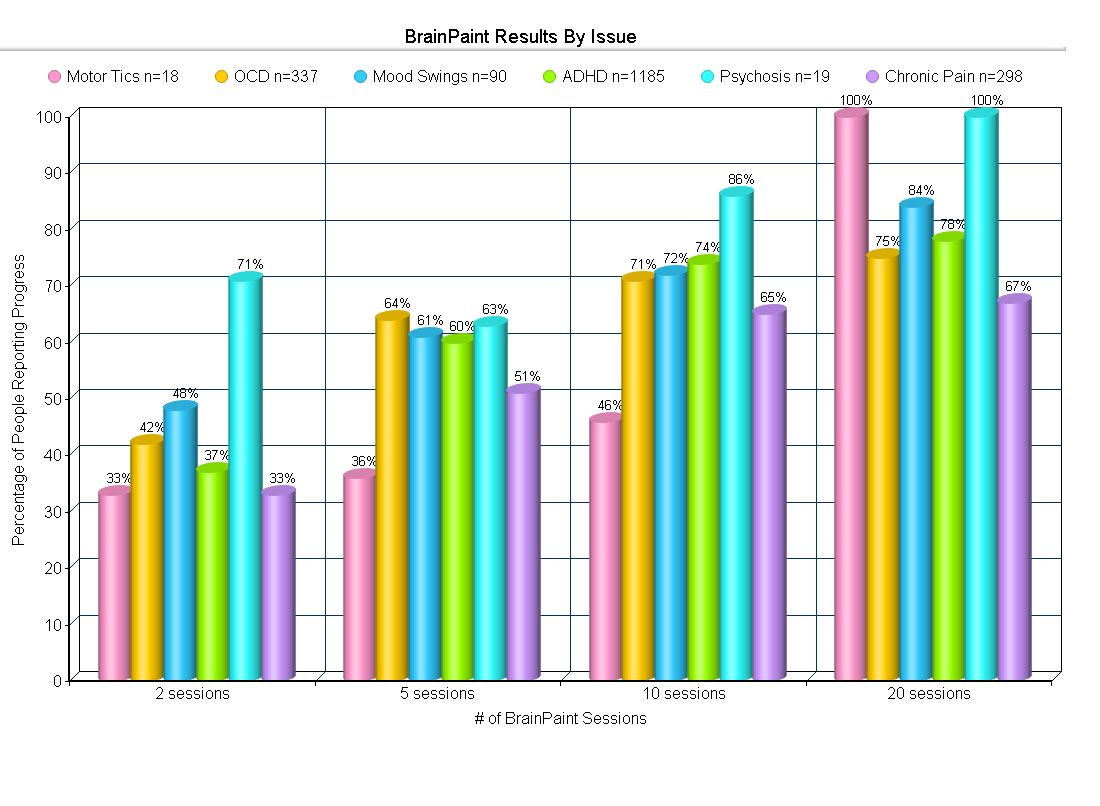Electroencephalography (EEG) Neurofeedback, a type of biofeedback, is an alternative therapeutic intervention designed to aid brain regulation and improve cognitive functioning. EEG signals and computerized feedback are used to excite desired internal states (e.g. focused, calm) whilst inhibiting undesired states (e.g. daydreamy, anxious). The goal of this treatment is to return your brain to a normal, and regulated state of functioning.

How Does Neurofeedback Work?
EEG Neurofeedback is a noninvasive procedure involving simple sensors applied to the surface of the scalp. These sensors detect, amplify, and translate the electrical activity of the brain into readable signals known commonly as brainwaves. During neurofeedback training, a machine-learning based program translates these signals into auditory and visual stimuli that rewards the client towards a well-regulated state.
For more information, please visit our Additional Resources page!

Please understand that the graphic above is a simplified visualization of neurofeedback and does not explain all mechanisms at work.
What conditions can neurofeedback treat?
The following presenting issues have demonstrated improvement after BrainPaint Neurofeedback:
- Anxiety
- Depression
- Panic Attacks
- Post-traumatic stress disorder (PTSD)
- Attention Deficit Disorder (ADD) Inattentive and Hyperactive Types
- Obsessive Compulsive Disorder
- Bipolar Disorder
- Insomnia
- Migraines
- Chronic Stress
- Generalized Anxiety Disorder
- Drug / Substance Abuse
Brain Paint has an efficacy rate of ~80% of users reporting improved symptoms after 20-30 sessions, two sessions per week. Individual results may vary and we cannot guarantee positive outcomes.

Select from the drop-down menu to see how BrainPaint may help you!
If you’d like a more detailed breakdown of how various symptoms are managed then check out BrainPaint’s Neurotherapy Benefits page!
What does a neurofeedback session look like?

Neurofeedback training starts with an Initial Evaluation and Assessment conducted by a Clinician. Frequency of treatment and tracking progress in treatment is determined at this time. Follow up sessions are conducted by a Supervised Clinical Tech or a Clinician. Neurofeedback training is typically conducted twice a week for optimal results.
To detect your brain’s electrical activity, our technician will apply 3-5 electrodes to the surface of your scalp, forehead, or ears. Sensors are applied using conductive paste which helps the sensor stick down whilst facilitating a strong signal connection. This set up lasts between 5-10 minutes. These sensors are for reading EEG signals only, and there is no electrical input at the sensor sites.
Once all sensors are connected, the technician will launch the BrainPaint software and explain your task. Follow the technicians instructions and do your best to stay engaged throughout the entire session. Training protocols which target particular brain wave bandwidths are selected for training. The computer then produces audio-visual feedback loops intended to reward the desired mental state. Sessions may take 30 – 45 minutes to complete. Once finished, our technician will unhook the sensors, clean up any remaining paste, and that’s it! If you have any questions about your experience, feel free to talk to our technician and/or clinical supervisor. Payment will be processed immediately following the session.
How many sessions will I need?
In general, patients may need between 20 – 40 sessions. However, the number of sessions required varies widely depending on:
- Symptom(s) / diagnosis of issue
- Severity of symptoms
- Number of individual goals
What separates BrainPaint® from the qEEG?
In 2024, there are now hundreds of licensed, and experienced practitioners offering neurofeedback services to their clientele using a variety of different systems such as BrainPaint and the qEEG. The number of neurofeedback systems and individual approach styles from practitioner to practitioner may introduce excessive trial and error until finding the right protocol for you. We’re not saying this is a bad thing, but this is where BrainPaint sets itself apart. BrainPaint’s automated, machine-learning model help minimize the trial and error stage so that we can produce protocols that result in positive outcomes in a shorter amount of time!




